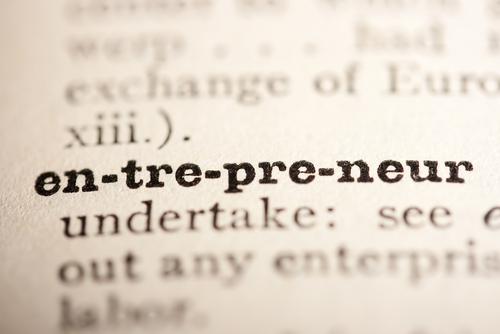The 2012 Facebook Factor: Young Voters More Likely to Respond to Each Other Than TV Ads

–Guest post by Francesca Ernst, American University graduate student.
As we draw closer to November 2012, pundits, columnists, and reporters alike are all discussing the ways President Obama must transcend his 2008 strategies to yield a 2012 victory. As Dan Balz noted November 26 in the Washington Post, as Obama faces an increasingly disheartened Democratic base, “even more effort is going into turning [voters] out again in big numbers, using smart technology and old-fashioned organizing.”
Acknowledging that circumstances are vastly different today than three years ago, how can the strategies of 2008 give insights as to how 2012 might look for President Obama?
In “A Two-Step Flow of Influence,” Matthew Nisbet and John Kotcher bring grassroots community organizing to the digital age. In reviewing a growing body of literature, they discuss how opinion leaders have long acted as the “connective communication tissue” in communities by influencing friends, family, coworkers, and peers on political events, social issues, and news. As the public’s relationship to news and politics has changed over the years, so too has the two-step flow of influence. The 2004 Bush campaign introduced a digital two-step flow of influence using an extensive e-mail and phone campaign to segment over two million community opinion leaders.
In 2008, the Obama campaign used the ‘two-step’ logic to target the Millennial generation, the nation’s most public conversation starters and agenda-setters. Consistent with the ‘two-step’ theory, there is little doubt that “real-world encounters” were facilitated and strengthened by Obama’s online strategy.
In looking to 2012, one cannot underestimate the importance of campaign Web sites over other new media tactics (e.g.: Facebook, Twitter, etc.). One could easily argue that Barack Obama’s Web site and volunteer-engagement portal (My.BarackObama) meaningfully enhanced real-world encounters for his supporters. In reaching their target audience (the millennial opinion leaders), the campaign triangulated information technology, unique messaging, and old-fashioned organizing into a cohesive strategy. As Ithaca College scholar Steven Seidman noted in the Journal of Visual Literacy:
[The campaign] designed it as a social network—a user-friendly, online community linking people who had similar beliefs and interests …Almost 60 percent of under-30 registered voters visited candidate Web sites, social-networking sites, or blogs in 2008, and this age group was much more likely to turn out for Obama.
Indeed, these sites allowed you to register to vote, subscribe to campaign updates and messages via e-mail and text message, start your own group with a listserv for your friends, organize your own event, download an app for your iPhone, create your own blog, donate money, order a t-shirt, and even make a customized Rockwell-esque campaign poster or Facebook picture (Norquay,2008). These were resources for a wide-range of low-information voters who synced with the simplicity of the message, could easily spread the information to their unique networks electronically, and could dedicate the time and energy to make a follow-up phone call. These were tools not for everyday politics as usual. These were tools for the future of politics—the nation’s Millennials.
The Obama Web site alone connected over one million opinion leaders—people willing to engage and persuade others for collective action. Giving these people resources, different mediums for spreading their simple message, and autonomy, enabled the two-step flow of influence model to take full effect. The campaign went ‘viral’ among audiences—not through traditional advertising, but instead through the self-regenerating word of mouth. This strategy allowed Obama’s ‘frame-breaking’ proposals to gather steam to change the tone of media coverage and public discourse, and activate what would ultimately result in 22.4 million Millennial votes for victory (Halperin, Heilemann).
As Big Think guest blogger and American University doctoral student Luis Hestres noted in his November 17th post, information technology has become a dominant—even inescapable—force in political activism. In 2012, the campaign message must again sync with the strategy. America’s youth are symbols of hope, change, growth, and prosperity. In order to combat the narrative of disappointment surrounding his Presidency, Obama must reconnect with the Millennial voters who turned out for him in 2008 and engage the four million Millennial voters that have come of age since. These voters don’t respond to campaign ads—they respond to each other.
–Guest post by Francesca Ernst, an MA student in Public Communication at American University in Washington, D.C.
Read other posts from Ernst’s project team examining strategies from the 2008 election campaigns as well posts from other project teams in her course on Public Communication Theory
References:
Balz, Dan (2011, Nov 27). “Will demographic shifts save Obama in 2012?” The Washington Post.
Heilemann, J., & Halperin, M. (2010). Game change: Obama and the Clintons, McCain and Palin, and the race of a lifetime. Pymble, NSW ; New York, NY: HarperCollins e-books
Hestres, Luis (2011, Nov 17). “iProtest: Social Media and the Evolving Nature of Political Activism.” Big Think.com.
Nisbet, M. C., & Kotcher, J. (2009). A Two-Step Flow of Influence? Opinion-Leader Campaigns on Climate Change. Science Communication, 30(3), 328-354.
Norquay, Geoff (2008). Organizing without an Organization: The Obama Networking Revolution. Options Politiques, October, 58-61.
Seidman, S. A & Park, R. (2010). Barack Obama’s 2008 Campaign for the U.S. Presidency and Visual Design. Journal Of Visual Literacy, 29 (1), 1-27.
Tufts University Center for Information & Research on Civic Learning & Engagement (CIRCLE). The Youth Vote in 2008 Fact Sheet. August 17, 2009.





